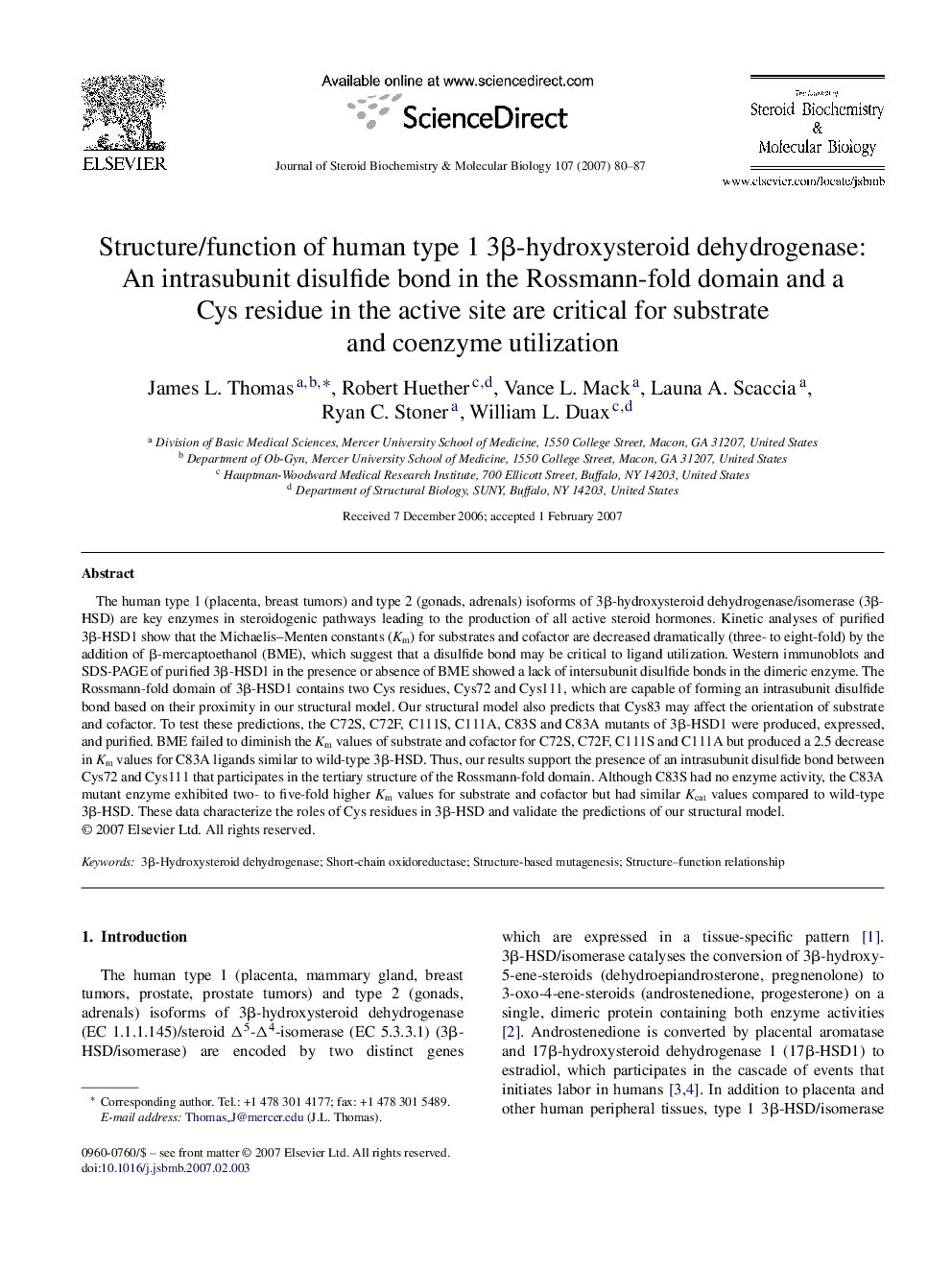| Article ID | Journal | Published Year | Pages | File Type |
|---|---|---|---|---|
| 1993009 | The Journal of Steroid Biochemistry and Molecular Biology | 2007 | 8 Pages |
Abstract
The human type 1 (placenta, breast tumors) and type 2 (gonads, adrenals) isoforms of 3β-hydroxysteroid dehydrogenase/isomerase (3β-HSD) are key enzymes in steroidogenic pathways leading to the production of all active steroid hormones. Kinetic analyses of purified 3β-HSD1 show that the Michaelis-Menten constants (Km) for substrates and cofactor are decreased dramatically (three- to eight-fold) by the addition of β-mercaptoethanol (BME), which suggest that a disulfide bond may be critical to ligand utilization. Western immunoblots and SDS-PAGE of purified 3β-HSD1 in the presence or absence of BME showed a lack of intersubunit disulfide bonds in the dimeric enzyme. The Rossmann-fold domain of 3β-HSD1 contains two Cys residues, Cys72 and Cys111, which are capable of forming an intrasubunit disulfide bond based on their proximity in our structural model. Our structural model also predicts that Cys83 may affect the orientation of substrate and cofactor. To test these predictions, the C72S, C72F, C111S, C111A, C83S and C83A mutants of 3β-HSD1 were produced, expressed, and purified. BME failed to diminish the Km values of substrate and cofactor for C72S, C72F, C111S and C111A but produced a 2.5 decrease in Km values for C83A ligands similar to wild-type 3β-HSD. Thus, our results support the presence of an intrasubunit disulfide bond between Cys72 and Cys111 that participates in the tertiary structure of the Rossmann-fold domain. Although C83S had no enzyme activity, the C83A mutant enzyme exhibited two- to five-fold higher Km values for substrate and cofactor but had similar Kcat values compared to wild-type 3β-HSD. These data characterize the roles of Cys residues in 3β-HSD and validate the predictions of our structural model.
Related Topics
Life Sciences
Biochemistry, Genetics and Molecular Biology
Biochemistry
Authors
James L. Thomas, Robert Huether, Vance L. Mack, Launa A. Scaccia, Ryan C. Stoner, William L. Duax,
